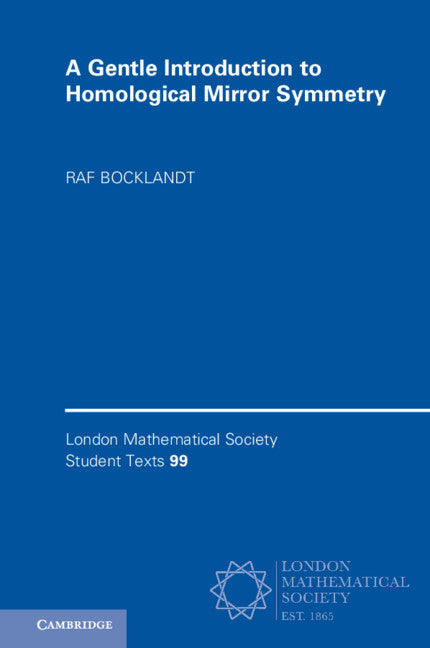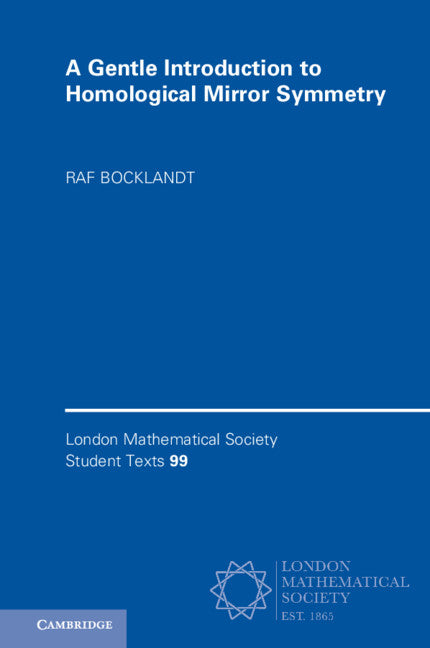Freshly Printed - allow 8 days lead
Couldn't load pickup availability
A Gentle Introduction to Homological Mirror Symmetry
Introduction to homological mirror symmetry from the point of view of representation theory, suitable for graduate students.
Raf Bocklandt (Author)
9781108728751, Cambridge University Press
Paperback / softback, published 19 August 2021
400 pages
22.8 x 15 x 2.5 cm, 0.628 kg
'The book under review provides an introduction to homological mirror symmetry which is accessible to graduate students in mathematics. In particular, it includes a great amount of background material, and motivational sections. Among the reason it is so approachable is the style …' Hulya Arguz, zbMATH
Homological mirror symmetry has its origins in theoretical physics but is now of great interest in mathematics due to the deep connections it reveals between different areas of geometry and algebra. This book offers a self-contained and accessible introduction to the subject via the representation theory of algebras and quivers. It is suitable for graduate students and others without a great deal of background in homological algebra and modern geometry. Each part offers a different perspective on homological mirror symmetry. Part I introduces the A-infinity formalism and offers a glimpse of mirror symmetry using representations of quivers. Part II discusses various A- and B-models in mirror symmetry and their connections through toric and tropical geometry. Part III deals with mirror symmetry for Riemann surfaces. The main mathematical ideas are illustrated by means of simple examples coming mainly from the theory of surfaces, helping the reader connect theory with intuition.
Part I. To A? and Beyond: 1. Categories
2. Cohomology
3. Higher products
4. Quivers
Part II. A Glance through the Mirror: 5. Motivation from physics
6. The A-side
7. The B-side
8. Mirror symmetry
Part III. Reflections on Surfaces: 9. Gluing
10. Grading
11. Stabilizing
12. Deforming
References
Index.
Subject Areas: Mathematical physics [PHU], Quantum physics [quantum mechanics & quantum field theory PHQ], Algebraic topology [PBPD], Algebraic geometry [PBMW], Algebra [PBF]


